Thank you for participating in the Fort River Sea Lamprey Volunteer Survey! We’re so grateful for your time and talents to contribute to this work!
Sea Lamprey Survey Training Materials
Program managers’ contact information
Boyd Kynard
CEO, BK-Riverfish,llc and Adjunct Fisheries Prof., Environ. Conserv. Dept., UMass Amherst
413-253-9421
bkriverfishllc@gmail.com
Sarah Rippere
Membership Coordinator, Connecticut River Conservancy
413.772.2020 x213
Sea Lamprey General Information
➔Lampreys are an old group of fish–found in fossils 360 million years old
➔An anadromous species, using freshwater (adult migration & spawning, rearing of eggs, larvae, to seaward migration of 5-year-old juveniles) and saltwater (juvenile/adult parasitic feeding on Atlantic Ocean fishes)
➔An ecological keystone species in New England rivers: 100% of adults die after spawning, contributing marine materials to the spawning stream
➔Adult runs into the Connecticut River watershed likely produce the largest known number of juveniles produced by any Atlantic coast river
➔Organizations like CRC and government agencies are attempting to restore runs through:
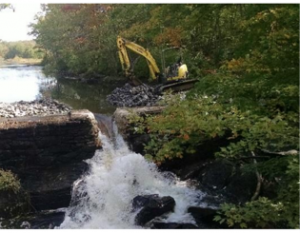
Dam Removals
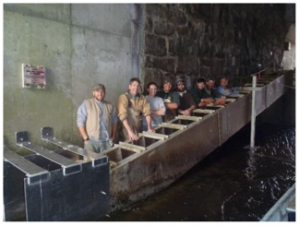
Fishway Construction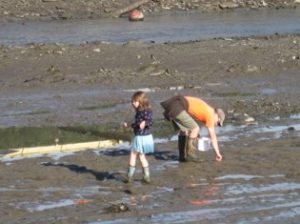
Rescue of Larvae & Juveniles during hydropower canal drawdowns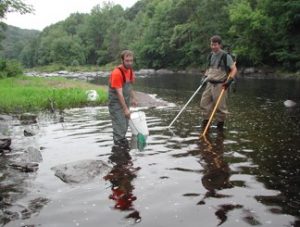
Research
Passage at CT River and Tributary Dams
Sea Lamprey ascend upstream past Bellows Falls DaminVermont. 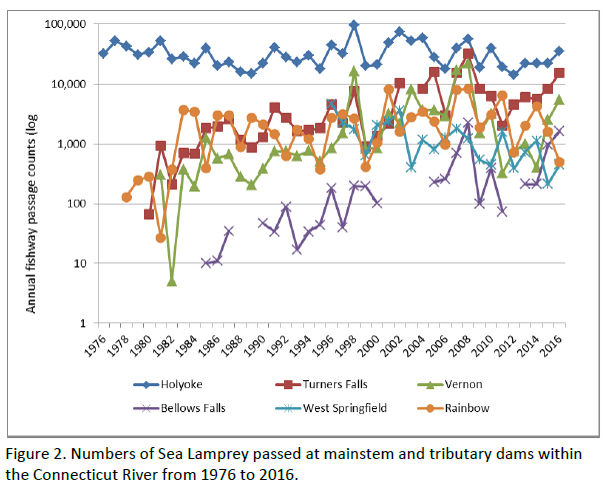
Dams in the Connecticut River Watershed 
Visuals
Sea Lamprey
Adult female 35 inches long
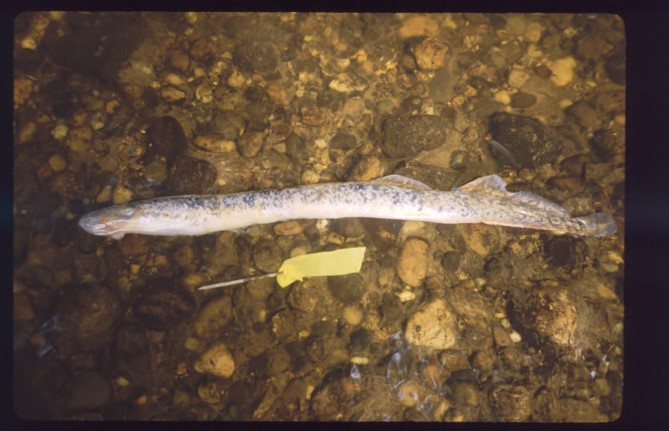
Males have a ½ inch diameter “rope structure” that runs along the top of fish
Female’s head showing 7 gill openings and eye. Adults migrating upstream in freshwater are almost blind as their body prepares to die.
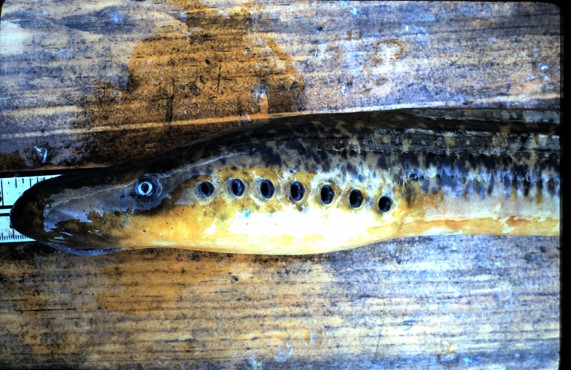
Anadromous Sea Lamprey Feeding in the Atlantic Ocean
Mouth of parasitic adult showing teeth and rasping tongue for attaching to and feeding on marine fish (not freshwater fish) for 1-2 years before returning to freshwater (not necessarily to their home stream) to spawn.
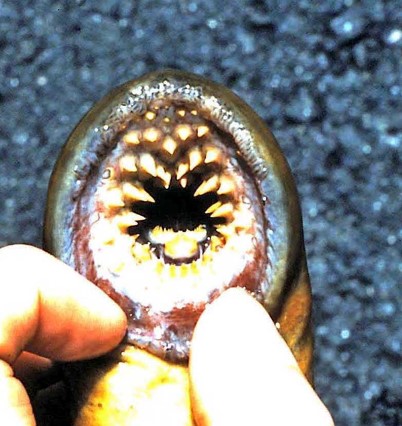
NOTE: In the Great Lakes, landlocked sea lamprey exist. They do not go to sea, only live in lakes and their rivers. Juveniles & adults feed on salmon and important fisheries species in the lakes. Landlocked sea lamprey are considered a pest species.
Nesting/spawning adults in the Fort River
Male (far left fish) & 2 Females digging a pit nest by moving rocks downstream to make a nest typically 3 ft wide x 3 ft long.
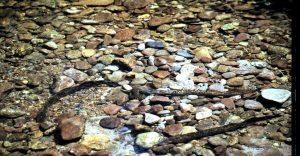
Two days earlier, the male dug a small “starter nest” at night. He waited in the nest & courted a female, and then, fish alternated spawning in the nest with digging.
Later, a second female was accepted and helped dig the nest (females mostly dig the nest).
After 48 hours or so, all eggs (200,000-250,000) are spawned & females leave and die. Male remains on nest another 24 hours or so, then leaves and dies.
Sea Lamprey Spawning
Here is a video to show adults digging the nest and spawning.
Adult migration in the Connecticut River & passage in the fish lift at Holyoke Dam.
Adults swimming upstream in the fish lift flume at Holyoke Dam.
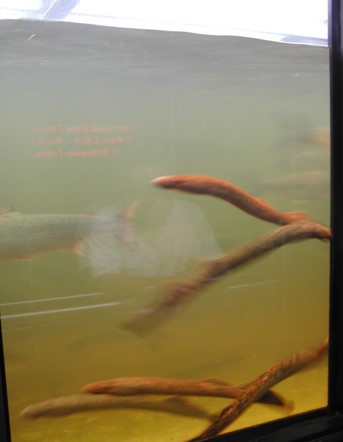
LIFE HISTORY: Adults cease feeding on fish and enter the river in March. Migration into tributaries and up the main stem river is mostly in May. Migrants reach Holyoke Dam (river mile 87) in May-June, are passed in the fish lift with no effect on nesting date, which in the Fort River, begins on 1-7 June and lasts 6-24 days (average, 15 days).
Visit the Holyoke Fish Lift, the only place to clearly see migrant adult sea lamprey in the USA.
Age 1-4 year old larvae that left burrows after water in the Cabot Station Power Canal @ Turners Falls Dam was drained. Thousands will die if not rescued.
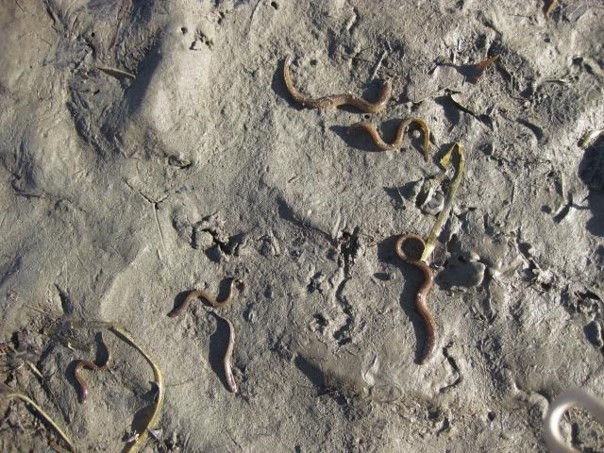
LIFE HISTORY: After they hatch, tiny larvae burrow into a spot in the stream with soft sediment leaving their head extended into flowing water. Larvae feed on drifting micro-organic debris.
Larvae live burrowed in the stream bottom for 5 years, leaving their burrows and swimming downstream as they grow. Many swimming larvae are eaten by predatory fish.

5-year-old Seaward Migrant Juveniles
Life History: After 5 years of life in freshwater, larvae metamorphose into juveniles. This metamorphosis is like tadpoles developing into frogs.
5-year-old juveniles migrate at night down the Connecticut River to the Atlantic Ocean from fall to spring
Sea Lamprey Contributions to the Connecticut & Fort Rivers
- Adults migrate upstream past four dams in the main stem of the Connecticut River, thus the species affects much of the river’s total watershed.
- Dead adult bodies contain marine-derived nutrients and materials that are important rare resources for aquatic and terrestrial plants and animals in the Connecticut River watershed.
- Nest digging changes the bottom & creates bottom diversity
- Lamprey nests are used for spawning by native minnows.
- Eggs, larvae, and juveniles are food for many freshwater fish.
- Larval burrows aerate the stream bottom.
- Juveniles produced in the Connecticut River likely grow up to become adults that colonize many Atlantic coast rivers.
Where to Look? Data to Collect
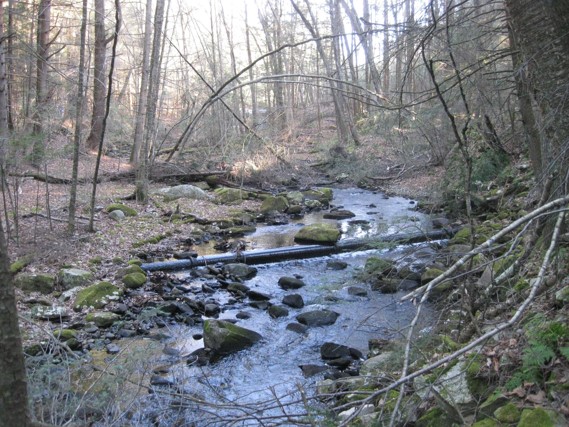
- On your stream map indicate 1) location and sequential # of lamprey nests you observe, and 2) location & sequential # of any dead lamprey you see.
- On your data sheet indicate macro-habitat of nest location (head of riffle, riffle, raceway, or pool);
- 2) nest dimensions (measurements of max. nest width (across stream) and length (up-downstream).
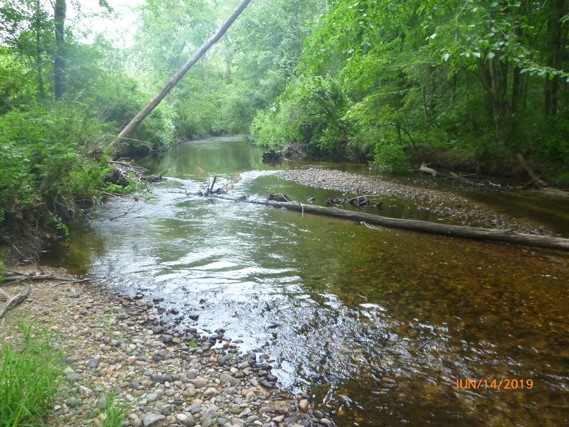
Procedures
Staying Safe & Practicing Good River Etiquette
➔Never wade into high and swift-moving water. Protect yourself and the habitat by avoiding eroded stream banks and staying aware of your surroundings. Your safety is a priority!
➔Be aware of private property. If access is needed, contact us.
➔Wear a face mask and observe physical distancing from other river-goers.
➔Most sunscreen and bug spray is highly toxic to aquatic organisms! Check the label before allowing treated skin or clothes to enter the river.
➔Do not remove deceased sea lamprey from the river.
➔Friendly conversations with people on the stream are good. You can learn a lot!
What to bring with you:
➔Safety first: A face mask, hand sanitizer and stream-friendly sunscreen.
➔Polarized sunglasses are extremely helpful to see through the water surface. You can find them online!
➔Flashlight if you visit your site at sundown/sunrise
➔Clothing for wading in shallow water – waders, boots or other comfortable water-resistant footwear.
➔Camera (the one on your phone will work, we would love to see pictures of your experience!)
➔Datasheet & a pencil or pen
➔Water bottle
➔Change of clothes and shoes
Thank you!!
Thank you for making this important work possible. Volunteers like you collect valuable data that contributes to restoration efforts and a healthier Fort River ecosystem!
Interested in learning more about sea lamprey in the Connecticut River? You can read the Connecticut River Atlantic Salmon Commission (CRASC)’s Connecticut River Anadromous Sea Lamprey Management Plan here.
